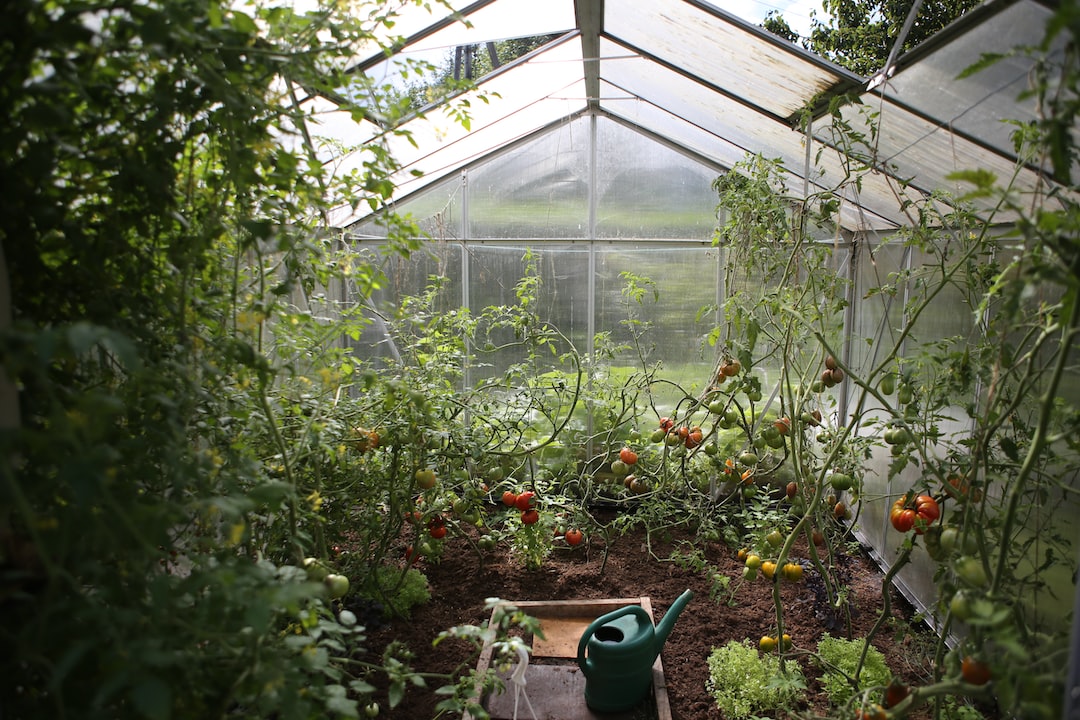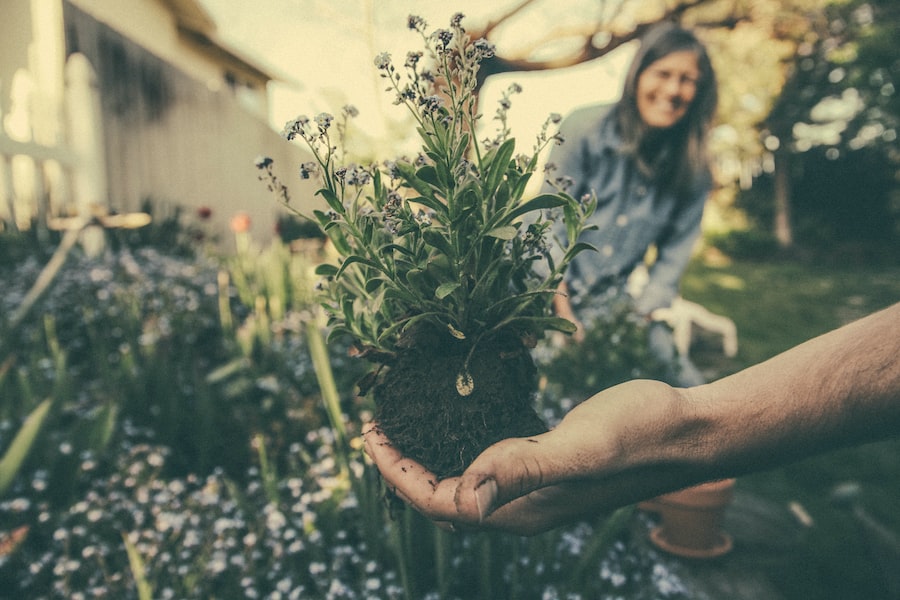Harvesting Lettuce: A Beginner’s Guide to Picking Fresh Greens from Your Garden

Lettuce is a popular and versatile vegetable that is commonly used in salads, sandwiches, and wraps. It is a cool-season crop that can be grown in both the spring and fall. Harvesting lettuce can be a rewarding experience, as you get to enjoy the fruits of your labor and have fresh, homegrown lettuce at your fingertips. In this article, we will explore the basics of lettuce harvesting, including the different types of lettuce, the growth cycle of lettuce, factors affecting lettuce growth, preparing your garden for lettuce harvesting, identifying the right time to harvest, tips for harvesting without damaging the plant, different methods of harvesting, storing freshly harvested lettuce, using harvested lettuce in your kitchen, common mistakes to avoid while harvesting, harvesting for different varieties, and maintaining your lettuce garden for continuous harvesting.
Key Takeaways
- Lettuce harvesting involves cutting the leaves off the plant at the right time
- Preparing your garden for lettuce harvesting involves ensuring the soil is well-drained and fertilized
- The right time to harvest lettuce is when the leaves are mature but before they start to bolt
- To harvest lettuce without damaging the plant, use a sharp knife or scissors and cut the leaves at the base
- Different methods of harvesting lettuce include cutting the entire head or just the outer leaves
- Freshly harvested lettuce should be stored in the refrigerator in a plastic bag with a damp paper towel
- Harvested lettuce can be used in salads, sandwiches, and as a garnish
- Common mistakes to avoid while harvesting lettuce include waiting too long to harvest and damaging the plant while cutting
- Different varieties of lettuce may require different harvesting techniques
- To maintain your lettuce garden for continuous harvesting, plant new seeds every few weeks and keep the soil moist and fertilized.
Understanding the basics of lettuce harvesting
Lettuce comes in various types, including romaine lettuce, butterhead lettuce, and loose-leaf lettuce. Romaine lettuce has long leaves that form a tall head, while butterhead lettuce has soft leaves that form a loose head. Loose-leaf lettuce does not form a head and instead has loose leaves that can be harvested individually. The growth cycle of lettuce typically takes around 60 to 80 days from seed to harvest. Lettuce prefers cool temperatures between 45°F and 75°F and can be affected by factors such as temperature, sunlight, water, and soil conditions. Understanding these basics will help you create the ideal growing conditions for your lettuce plants.
Preparing your garden for lettuce harvesting
Before you start planting your lettuce seeds or seedlings, it is important to prepare your garden soil. Lettuce prefers well-draining soil that is rich in organic matter. You can improve the soil by adding compost or well-rotted manure before planting. It is also important to ensure that the soil pH is between 6.0 and 7.0, as lettuce prefers slightly acidic to neutral soil. When planting lettuce, you can either sow the seeds directly into the garden or start them indoors and transplant them later. If sowing directly, make sure to space the seeds evenly and cover them with a thin layer of soil. Water the seeds gently to avoid displacing them. Once the lettuce plants have emerged, make sure to water them regularly and provide them with a balanced fertilizer every few weeks.
Identifying the right time to harvest your lettuce
| Metrics | Values |
|---|---|
| Days to maturity | 45-60 |
| Leaf size | 4-6 inches |
| Color | Dark green |
| Texture | Crisp |
| Harvest frequency | Every 2-3 days |
Knowing when to harvest your lettuce is crucial to ensure that you get the best flavor and texture from your crop. Signs of maturity include the formation of a firm head for romaine and butterhead lettuce, or the leaves reaching their full size for loose-leaf lettuce. The timing for harvesting different varieties of lettuce can vary. Romaine lettuce is typically harvested when the heads are firm and have reached their full size, which is usually around 70 to 80 days after planting. Butterhead lettuce is harvested when the heads are firm but not fully formed, which is usually around 60 to 70 days after planting. Loose-leaf lettuce can be harvested at any time once the leaves have reached their full size.
Tips for harvesting lettuce without damaging the plant
To harvest lettuce without damaging the plant, you will need a few basic tools such as a sharp knife or pair of scissors. It is important to use a clean and sharp tool to make clean cuts and minimize damage to the plant. When harvesting, make sure to cut the leaves or heads close to the base of the plant, leaving a small stub behind. Avoid pulling or tearing the leaves, as this can damage the plant and make it more susceptible to disease. It is also important to harvest lettuce in the morning when the leaves are crisp and hydrated.
Different methods of harvesting lettuce

There are several methods of harvesting lettuce, depending on your preference and the type of lettuce you are growing. Whole head harvesting is commonly used for romaine and butterhead lettuce. To harvest the whole head, simply cut it off at the base of the plant using a sharp knife or pair of scissors. Leaf-by-leaf harvesting is commonly used for loose-leaf lettuce. To harvest individual leaves, simply cut them off at the base of the plant, leaving the rest of the plant intact. Cut-and-come-again harvesting is a method that allows you to harvest lettuce leaves as needed while allowing the plant to continue growing. To do this, simply cut off the outer leaves, leaving the inner leaves to continue growing.
How to store freshly harvested lettuce
Proper storage techniques are important to ensure that your freshly harvested lettuce stays fresh and crisp for as long as possible. After harvesting, gently remove any dirt or debris from the leaves and rinse them under cold water. Shake off any excess water and pat the leaves dry with a clean towel or paper towel. Store the lettuce in a plastic bag or container lined with a paper towel to absorb any excess moisture. Place the bag or container in the refrigerator and use within a week for best quality.
Ways to use harvested lettuce in your kitchen
Freshly harvested lettuce can be used in a variety of ways in your kitchen. It is commonly used in salads, where it can be paired with other vegetables, fruits, proteins, and dressings to create a delicious and nutritious meal. Lettuce can also be used in sandwiches and wraps, where it adds crunch and freshness to the filling. Additionally, lettuce can be blended into smoothies or juiced for a refreshing and healthy drink.
Common mistakes to avoid while harvesting lettuce
There are several common mistakes that people make while harvesting lettuce that can affect the quality and yield of their crop. Overharvesting is a common mistake where people harvest too many leaves or heads at once, leaving the plant unable to regrow and produce more lettuce. Underharvesting is another common mistake where people wait too long to harvest, resulting in overgrown and bitter lettuce. Damaging the plant while harvesting is also a common mistake, as it can make the plant more susceptible to disease and reduce its overall productivity.
Harvesting lettuce for different varieties
The method of harvesting lettuce can vary depending on the variety you are growing. For romaine lettuce, you can harvest the whole head by cutting it off at the base of the plant. For butterhead lettuce, you can also harvest the whole head, but it is best to do so when the heads are firm but not fully formed. For loose-leaf lettuce, you can harvest individual leaves as needed, leaving the rest of the plant intact to continue growing.
Maintaining your lettuce garden for continuous harvesting
To ensure continuous harvesting of lettuce, it is important to maintain your garden properly. Crop rotation is important to prevent the buildup of pests and diseases in the soil. It is recommended to rotate your lettuce crop every year or every season if possible. Pest and disease control is also important to prevent damage to your lettuce plants. Regularly inspect your plants for any signs of pests or diseases and take appropriate action if necessary. Harvesting techniques for regrowth, such as cut-and-come-again harvesting, can also help ensure continuous harvesting by allowing the plant to regrow after each harvest.
Harvesting lettuce can be a rewarding experience that allows you to enjoy fresh and homegrown produce. By understanding the basics of lettuce harvesting, preparing your garden properly, identifying the right time to harvest, using the right tools and techniques, storing freshly harvested lettuce correctly, and avoiding common mistakes, you can ensure a successful harvest. Whether you prefer whole head harvesting, leaf-by-leaf harvesting, or cut-and-come-again harvesting, there are various methods to suit your preference and the type of lettuce you are growing. By maintaining your lettuce garden properly, you can enjoy continuous harvesting and have fresh lettuce at your fingertips throughout the growing season. So why not give lettuce harvesting a try and enjoy the benefits of homegrown produce?



